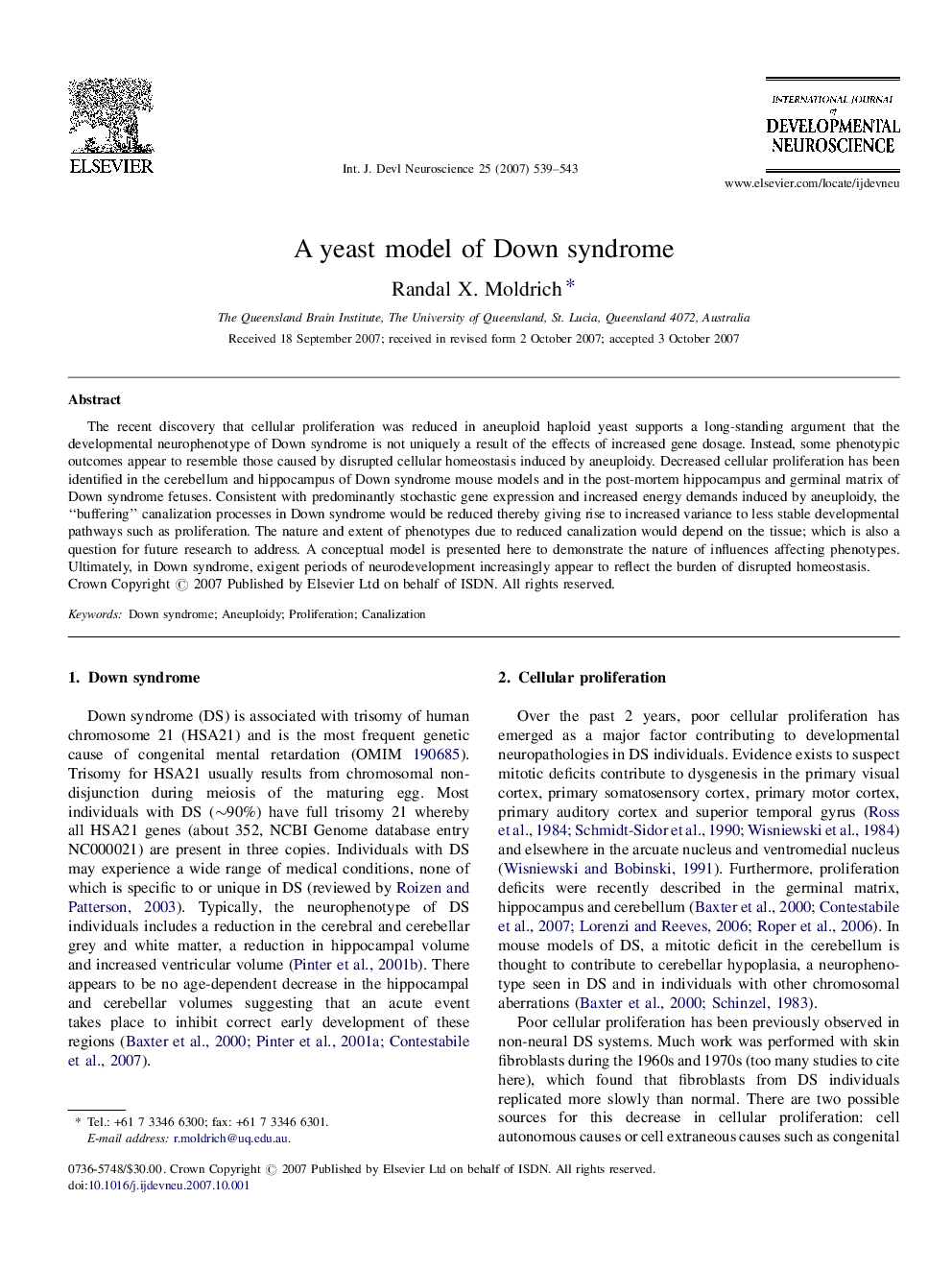| Article ID | Journal | Published Year | Pages | File Type |
|---|---|---|---|---|
| 2787108 | International Journal of Developmental Neuroscience | 2007 | 5 Pages |
The recent discovery that cellular proliferation was reduced in aneuploid haploid yeast supports a long-standing argument that the developmental neurophenotype of Down syndrome is not uniquely a result of the effects of increased gene dosage. Instead, some phenotypic outcomes appear to resemble those caused by disrupted cellular homeostasis induced by aneuploidy. Decreased cellular proliferation has been identified in the cerebellum and hippocampus of Down syndrome mouse models and in the post-mortem hippocampus and germinal matrix of Down syndrome fetuses. Consistent with predominantly stochastic gene expression and increased energy demands induced by aneuploidy, the “buffering” canalization processes in Down syndrome would be reduced thereby giving rise to increased variance to less stable developmental pathways such as proliferation. The nature and extent of phenotypes due to reduced canalization would depend on the tissue; which is also a question for future research to address. A conceptual model is presented here to demonstrate the nature of influences affecting phenotypes. Ultimately, in Down syndrome, exigent periods of neurodevelopment increasingly appear to reflect the burden of disrupted homeostasis.
